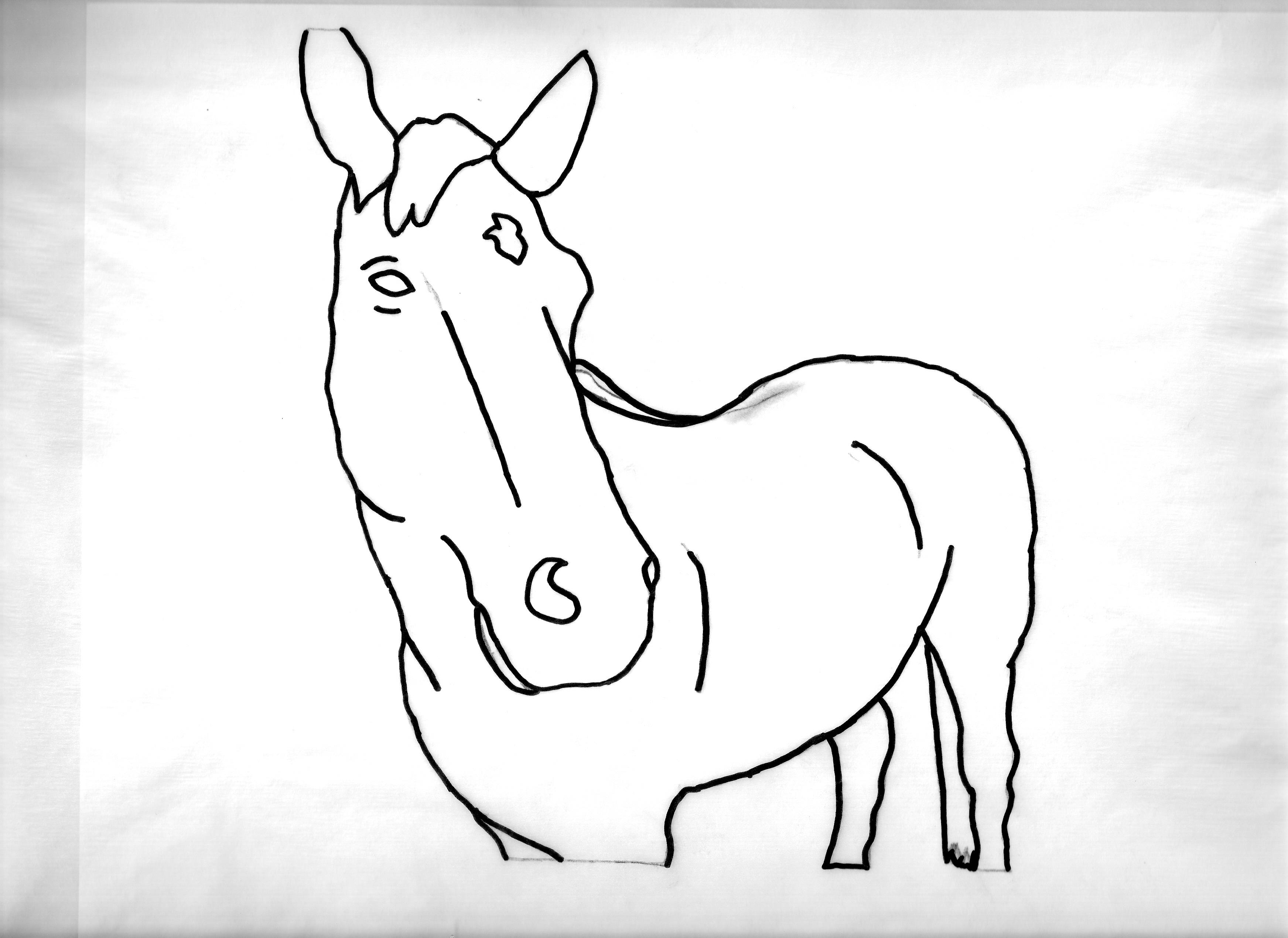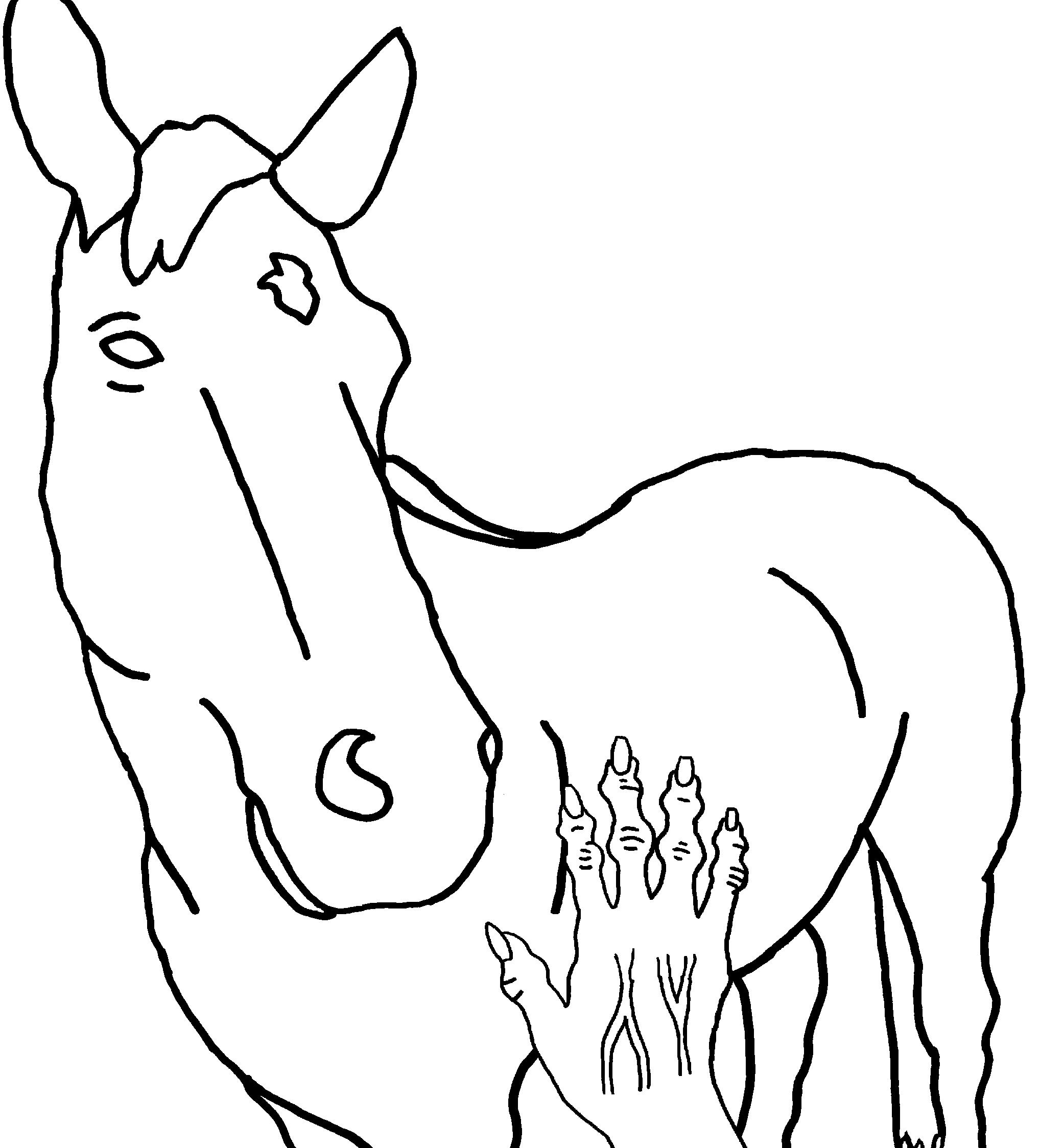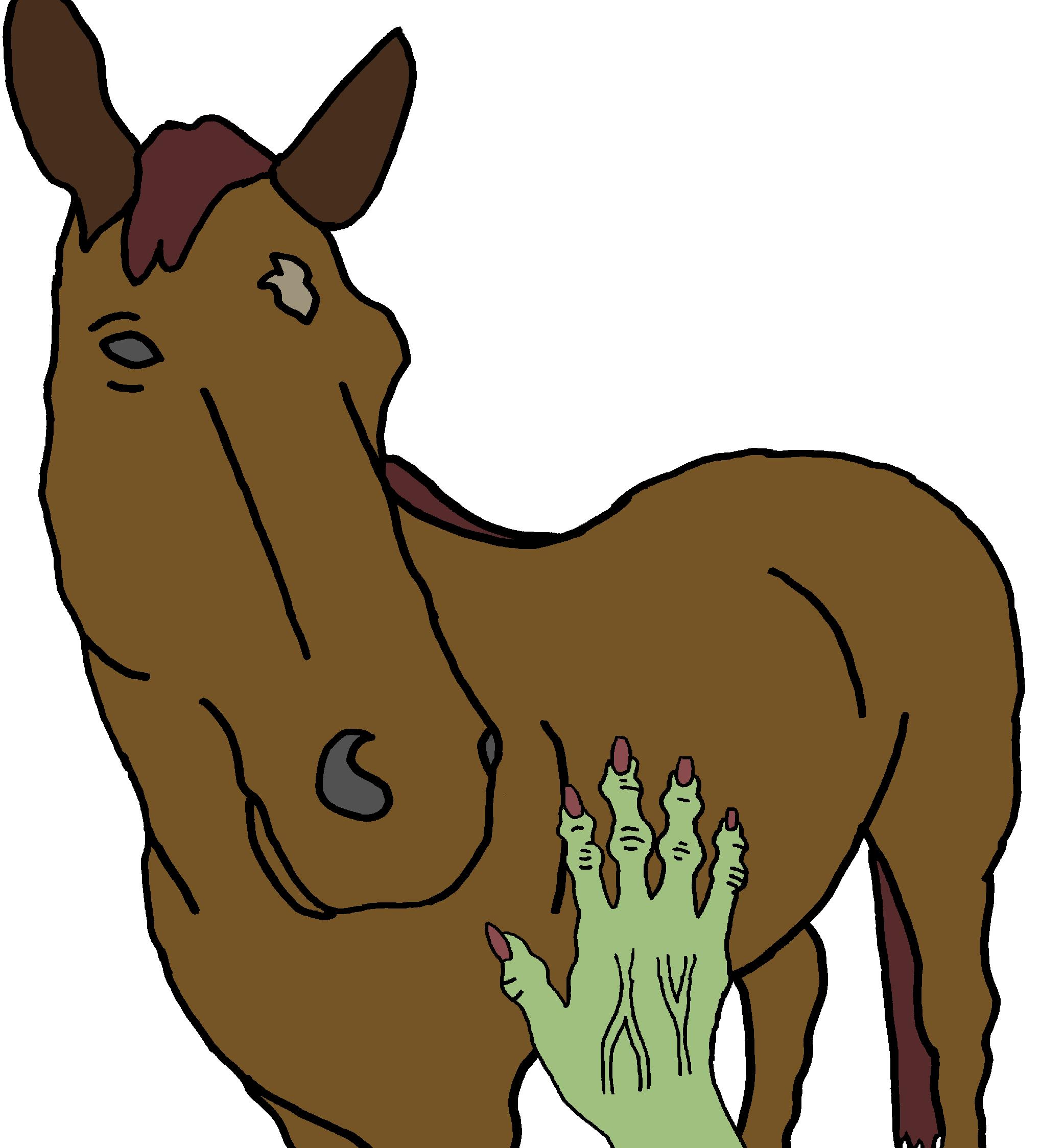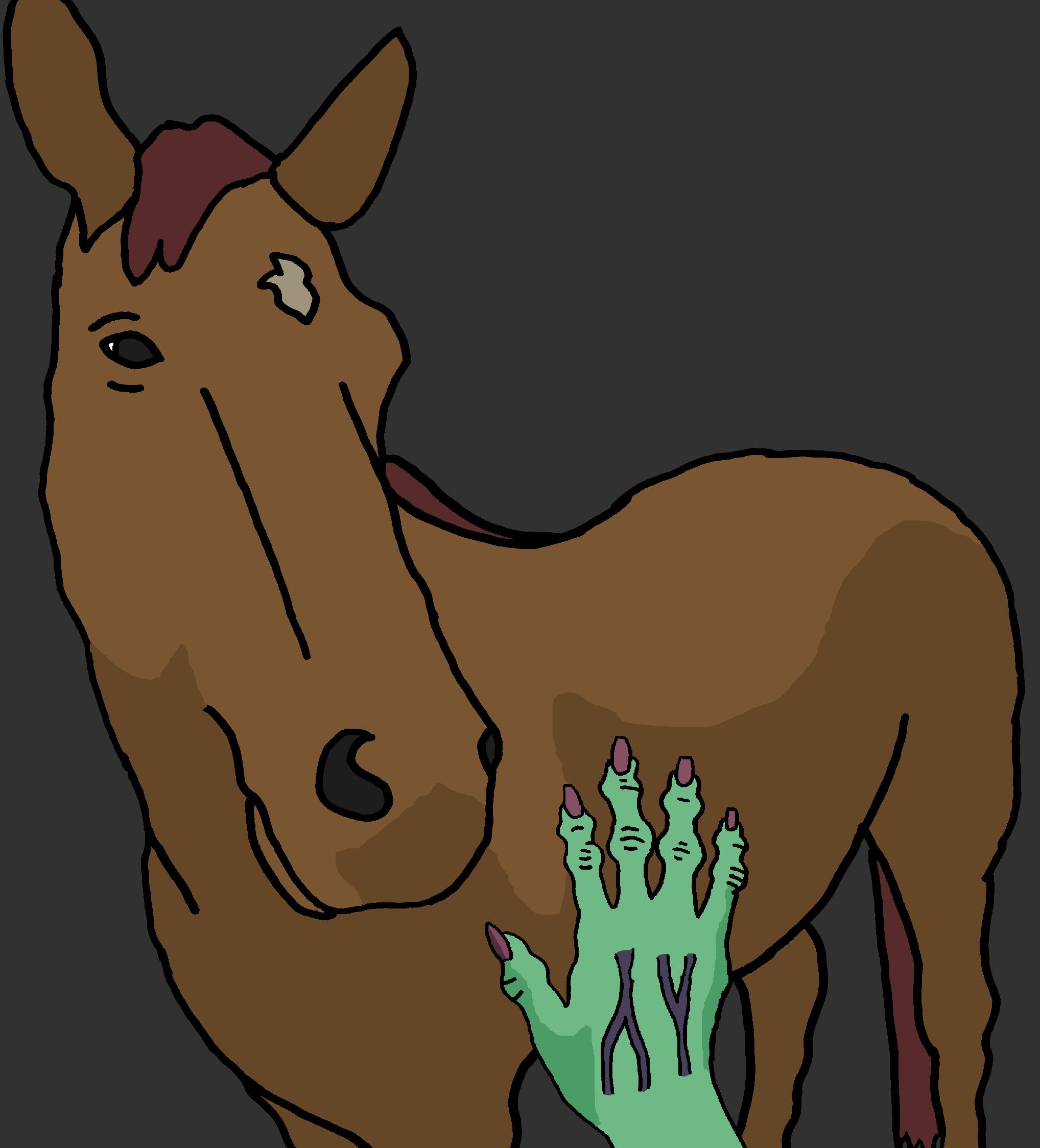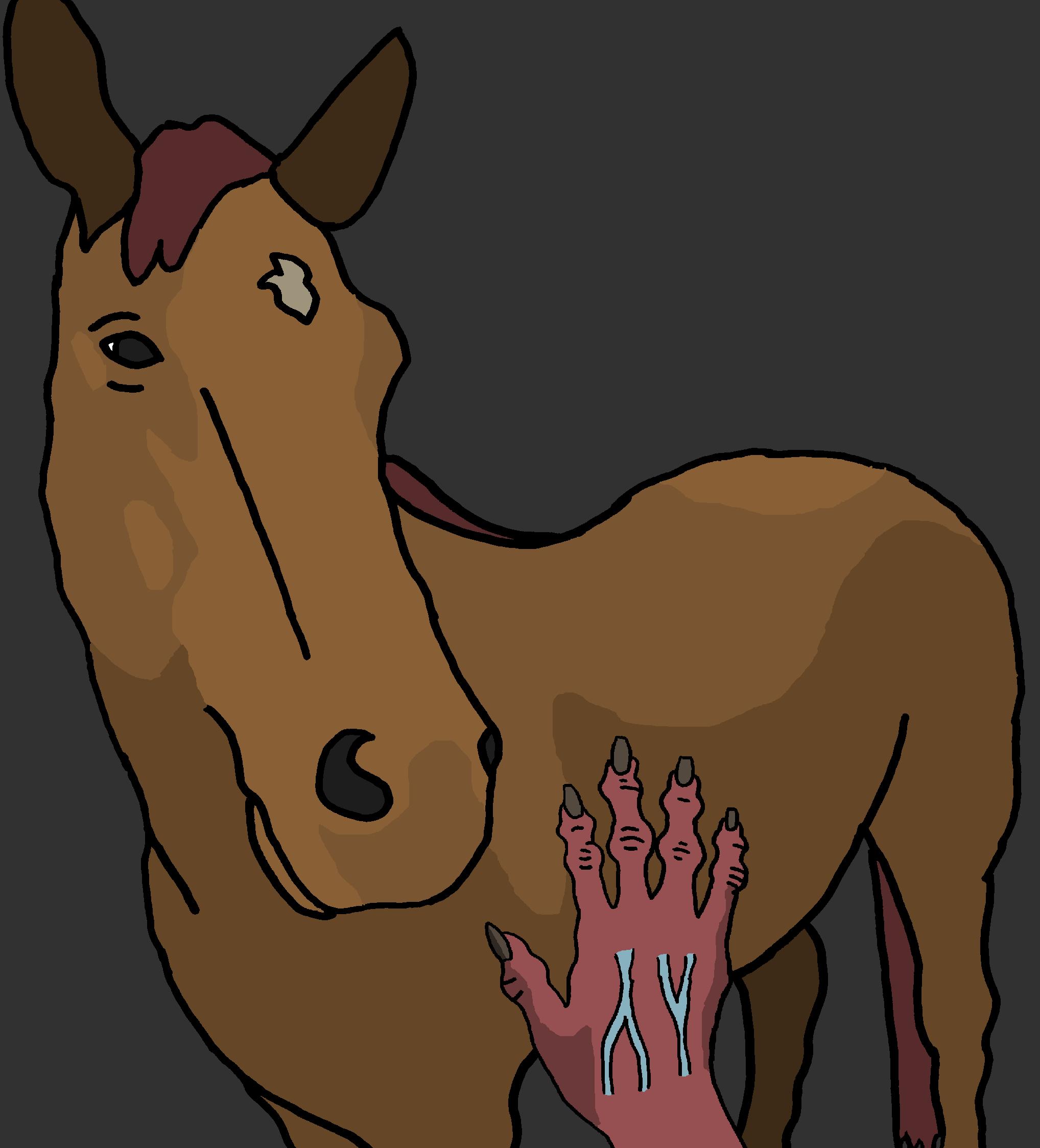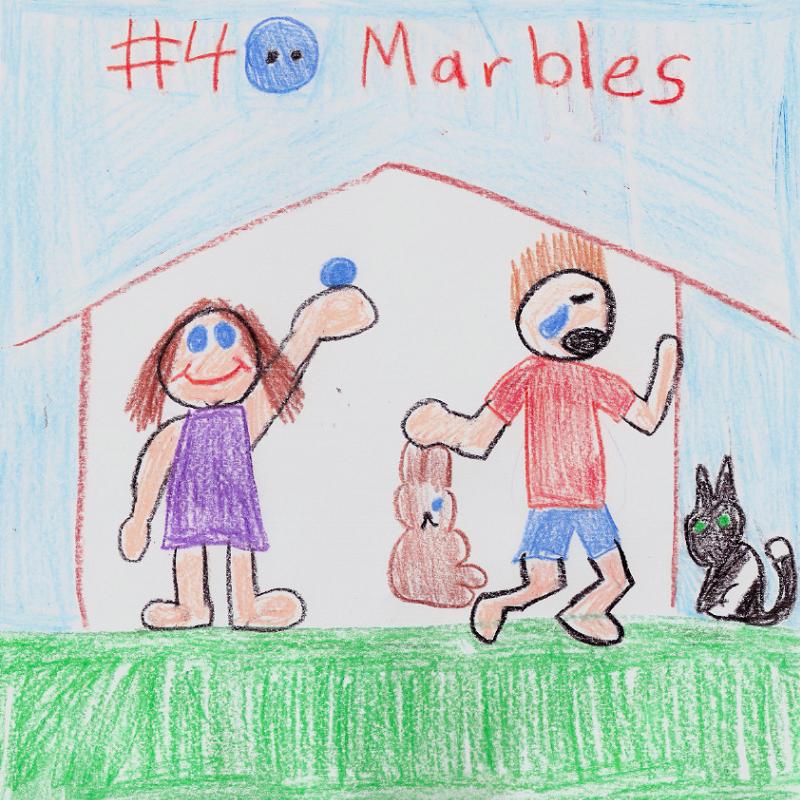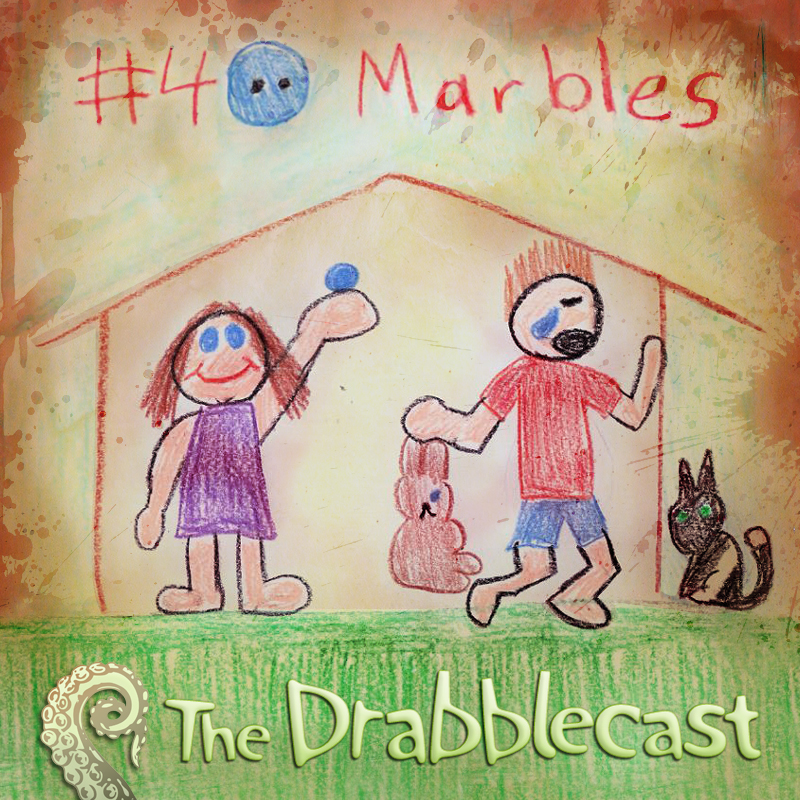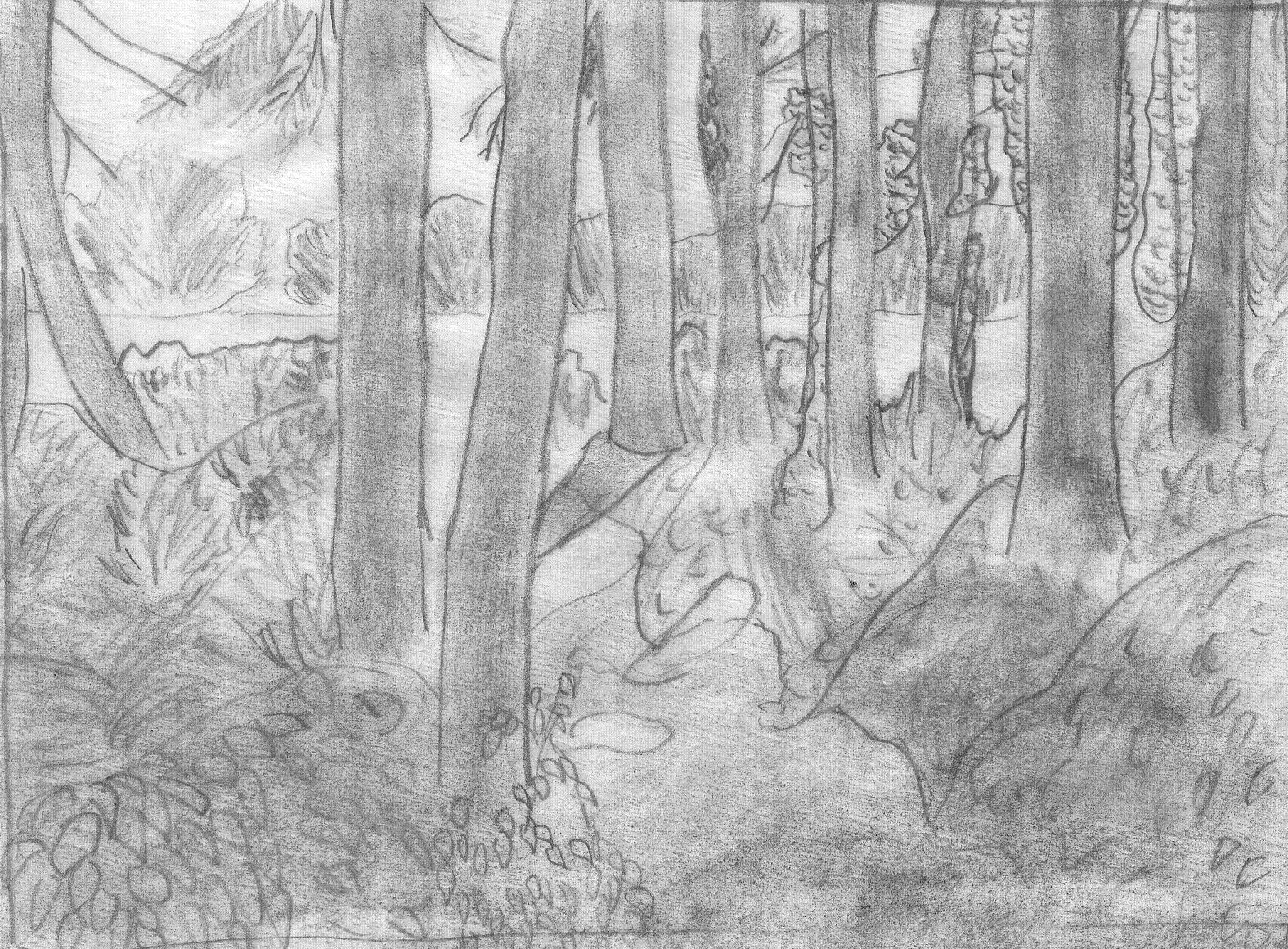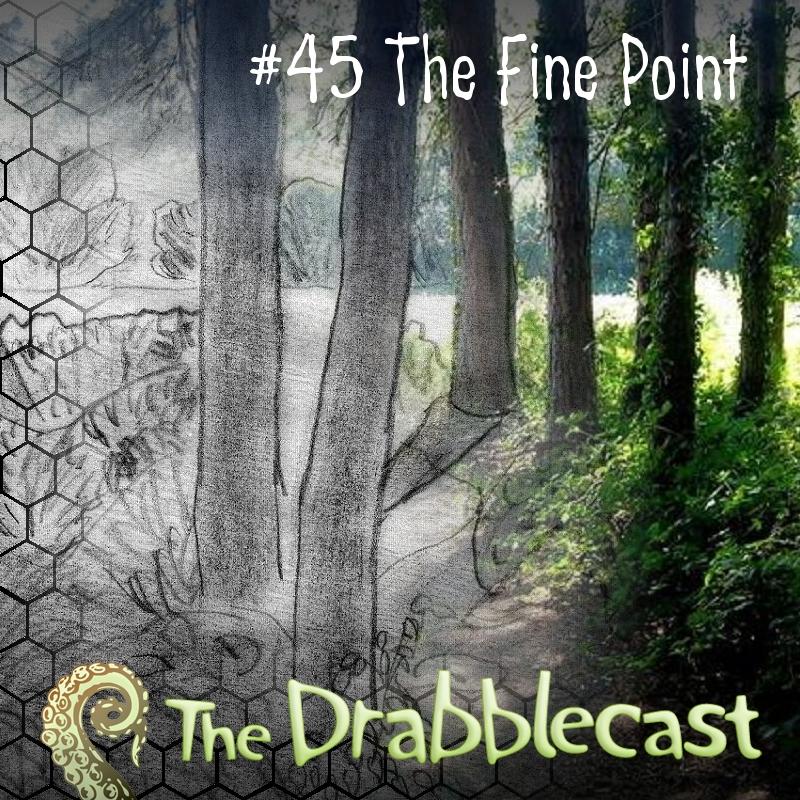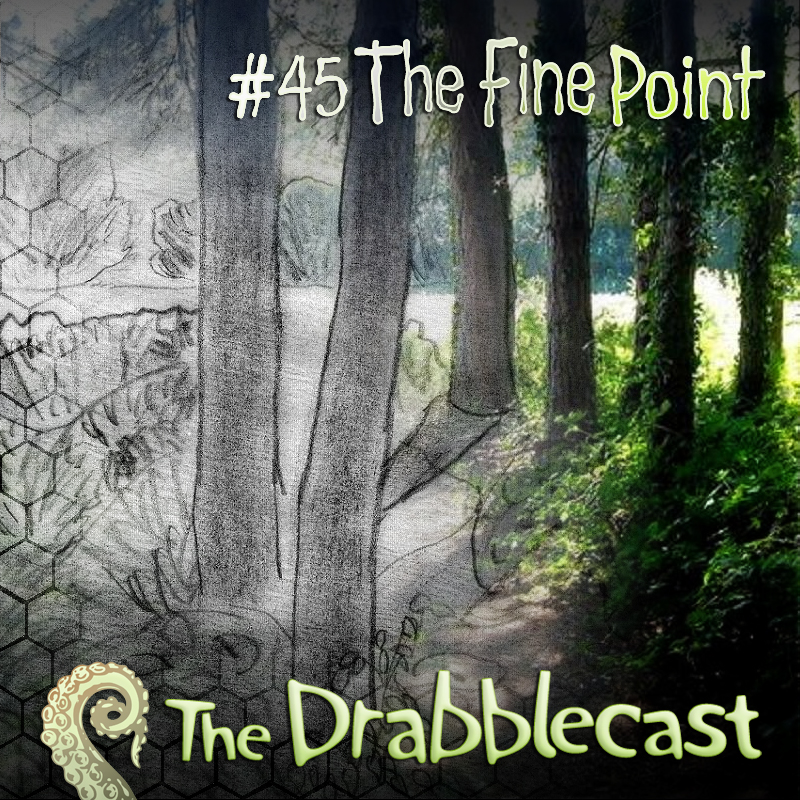written by Frank Dutkiewicz
Cripes! When was the last time I posted a review? Falling behind, falling behind. Someone needs to review these finely crafted tales. Too bad those someone’s aren’t Locus, Tangent Online, or one of those other award nominated reviewing sites. One of these days the rest of the industry will acknowledge the fine work posted at DSF, and Jon and Michelle’s innovative idea of using the internet. One of these days they all will! You’ll see!
Whew. I usually save that rant for my 3rd party political obsession. Instead of politics, lets focus on things far more important. Like this month’s DSF offeringsâ€
The Stories
“The Blue Room” by Jason Sanford (debut 4/1) opens with a bored mid-teen named Aiesha. She lives with her grandfather on the family farm in the middle of Wyoming, an unlikely place for a young black lady who spent most of her life in the city. Sensitive to her isolation, Grandpa Loren opens a door she has never seen before and reveals a crystal clear pool. Steps descend into the pool and lead to a stone arch far below. Grandpa claims the water is history and its depths are rich with experiences of her ancestors. She can talk to her lost grandmother and experience past events of her great-great grandfather who first settled the land. The water is a connection to her past, or a trap to keep her there forever.
“The Blue Room” has a plot as deep as the depth of the pool. The wide-open prairie is hardly a place a black girl would choose to live. A few in the white community have not rolled out the welcome mat for her, but it isn’t all bad for Aiesha. A handsome boy from school has taken a shine to her.
Coe lives on a ranch nearby. His family shares a past with Aiesha, and it is a violent one at that. As much as Coe loves the land, he is ashamed of the way his ancestors treated Aiesha’s. The boy defends her honor and as payment Aiesha shows him the Blue room. Grandpa Loren hasn’t forgotten the stories of violence a century and a half ago, and neither have the waters.
“Blue Room” is a delicate mystery. The readers are shown the waters but are left to guess of its true nature. Grandpa Loren is eager to join its depths and can hear his departed wife in its waves. Aiesha loves to swim in it and can experience the past the deeper she dives. It is the mystery of what the waters that kept me glued to this story.
There were plenty of possible outcomes for this piece. The direction in which Mr Sanford chose to take is not one I would have taken but I prefer Jason’s approach. The waters in the tale prove to be a catalyst of events rather than a mirror of the past. What I especially enjoyed about the story was the way it ended, poetic and fitting.
“The Blue Room” is a finely crafted work of art. Not sure I like it enough to hang the art on my wall but I do believe it is lovely enough for any museum. Mr Sanford demonstrates why he is always a threat to win the leading awards every year.
Doctor Monveve works in a cryogenic storage facility in “The Rules of Regeneration” by Andrew L Findlay (published April 4th, 2011 and reviewed by Anonymous) and is surrounded by dead but frozen corpses of people wishing to be revived when/if whatever killed them becomes curable. Obviously in a world driven by market forces, the cryo company is forced to ‘wake’ some of its customers earlier than expected when their funds for storage turn out.
The story focuses on the good doctor waking one such individual. I thought the story was well written and an easy read, but it was a little plot-thin. The prose was interspersed with quotes from the company’s rule book for regeneration, but otherwise it felt more like vignette than a plot. The tiny twist is delivered at the end, was very tiny, but was it enough? Not sure it was for me.
In “Wings for Icarus” by P. Djeli Clark (published on 5th April 2011 and reviewed by Anonymous), a young boy misses his father, a part time inventor (in his shed). The boy’s father died when one of his inventions–a set of silver wings–fails to perform and he falls from the sky.
The boy finds the wings in the shed and sets about repairing them in secret…
This is well written story with good characterisation, but it didn’t work for me. I didn’t really believe the story; it felt a little contrived in the end. Perhaps others wouldn’t wonder how a boy could repair and fly the wings that his more experienced father couldn’t, but I did.
Eternal youth has lost its appeal in “N is for Nevermore, Nevermore Land” by The Alphabet Quartet (debut 4/6). A fairy appears at Ember’s window with an offer reminiscent of Peter Pan. Even if the woman with wings isn’t crazy, Ember isn’t one to throw away the good thing she has for a life in a grim fairy tale.
Rather liked this very brief tale. Ember is the type of child we all hope our children turn into.
Our main character meets Femi in a break room and is immediately smitten, in “Break” by Mishell Baker (debut 4/7 and reviewed by James Hanzelka). She warns him that it’s only a spell and that he will see the true her in time. She gives him something to help the process, but he’s sure that it’s not as simple as that.
Nice little story and interesting to follow the two characters through this brief encounter. You keep hoping for something special between them. I enjoyed following them through the process.
“Outer Rims” by Toiya Kristen Finle (debut 4/8 and reviewed by James Hanzelka). On their way back from a visit to the rapidly vanishing shoreline, a mother and her kids pick up a hitchhiker. When he shows signs of sickness they take him to the hospital, which is overrun with other victims. The new sickness is virulent and devastating. Can they find a cure before the next storm inundates the place?
I was a little thrown off by the definition at the start, seemed a little confusing. Once into the story, however, it moved forward with a nice pace and interesting twists along the way. Pretty good read.
A species of a small world threatens all the realities in “The Pen is Mightier” by Mik Wilkens (debut 4/11). Anseel partitions the Chamber of Overlords to destroy Earth. The inhabitants’ active imaginations have created an entertainment called ‘fiction,’ resulting in an abundance of multiverses in its locality. The splits in reality have become so numerous they threaten to unravel the multiverses and destroy all the realities in the process.
I found this tale clever. How do I love a story that ends the way that it begins.
An unusual family’s lives are changed when the authorities crash down their door in “Shards” by Leah Thomas (debut 4/12). The crime they have committed is harboring a golem. The golem was created by the mother to serve as her son’s father. Now men have come to destroy it, imprison her, and take the boy away.
This story is told in three separate letters in the voices of each family member. They are apologies and confessions – explanations of how they felt for each other. They tell of the day when they last saw each other and of the mark that day left on their soul. The tone, attitudes, and perspectives are so very different in this odd world Ms Thomas created. I found them masterfully done.
I waited the good part of a day before I wrote this review. The more I thought of the story, the more impressed I became with it. The premise and narrative left its own mark on me. The ending was surprising, one of which I approve. A story that sticks to your psyche as if it were gum on the bottom of your shoe is one worth recommending. Recommended.
“O is for Obfuscation” by the Alphabet Quartet (debut 4/13) is the tale of a boy who wishes to be invisible. The genie warns he would be blind (simple physics) if he were granted that gift but has a solution so he can’t be seen.
Cute story. I like clever genies. The protagonist gets his wish. I liked the outcome of this flash piece.
“Selfless” by Kenneth S Kao (debut 4/14 and reviewed by Dustin Adams). Imagine a version of you watching you, judging every move you make with the life that was once theirs.
This story begins with a man, cured of his wasting disease, about to restart his life, only to find he’s a clone of his dying self. There was no cure, only transition.
The clone will live the life he’s always lived, only now he’ll be looking over his shoulder. For the man who is the same man he’s always been, this added insecurity is a bane to his future daily existence. After all, he didn’t decide to clone himself, his “parent” did. So, while his memories are all the same, he is a different man, on a different path.
This feels wrong somehow. Unfair. The author of this piece, Kenneth Kao, did a great job of making me feel for this character and I wonder what his new life will be like. This story, while short in word count, is large in creativity. It will make you think.
Young Veri is one of the lucky chosen to ride the mysterious elevator in “The Elevator” by Erik M Igoe (debut 4/15). The elevator is an old relic, set alone in a desert, rusted and weathered. Only a few, winners of a lottery, are granted a rare ride in it. Those who have ridden it before have never spoken of their trip.
Eight-year old Veri receives his invitation in the mail. Telling no one that he was selected, he boards a bus destined to the elevator, where he meets several others lucky enough to be chosen as well.
“The Elevator” is a “Canterbury Tales” collection of conjecture. Each passenger on the bus has their own idea of what the elevator is and what is in store for them. Their opinions vary greatly but all the riders have grand expectations of what is to come. Veri is the lone passenger who hasn’t formed an opinion, he is only eager to experience the unknown the elevator represents to him.
I found this tale to be all build up to a great event that didn’t pay off, which is what the story was about. All the passengers are filled with hope, yet all, except Veri, miss the hope the elevator offered.
The tale ends up being a metaphor of cynicism. Unfortunately, I shared the feelings many of the characters experienced. This finely crafted story failed to have the payoff I hoped for. I suppose that makes me self-absorbed in my own selfish expectations, like most of the author’s characters
Megan confronts her school counselor about her friend Susie in “The School Counselor” by Mark Sarney (debut 4/18). The 22nd century is a job-scarce, highly competitive society. Only driven students have a chance of achieving their career desires. Megan believes her friend is destined for poverty unless their counselor pushes Susie to apply herself.
American schools have become career-engineering specialists in Mr Sarney’s bleak future. To stand a minimal chance, students must commit to countless hours of training. Megan is one of the few who is driven to beat the odds, regardless of the cost. Much of this flash is told in miniature bios, usually a turnoff but they served this piece well. For such a short tale, I found the characters engaging and the ending done well. Not too bad for the author’s first publication.
Too much of a good thing is better than nothing at all in “Pippa’s Smiles” by Cat Rambo (debut 4/19). Marcus falls for a shipwrecked beauty. Pippa knows little of his language but clings to her new husband as if he is her life preserver. Marcus cannot take her obsession for him. He leaves her the keys to his shop, choosing to remember her warm smile as he walks off to experience life and adventure for himself.
“Pippa’s Smiles” is Homer’s ‘Odyssey’ in reverse. Marcus searches for the love of his life he imagined instead of staying with the love he left behind. Much happens to Marcus in his travels (I will not indulge so as not to spoil it for you) but the ending is predictable the moment he walks out the door. Ms Rambo’s tale is one big moral, a moral that has been told over and over for millennia.
Although the details and events of “Pippa” are new, this is a story everyone has read before.
Everyone loves a parade in “P is for Parade” by the Alphabet Quartet (debut 4/20). This futuristic event has much in common with parades of today, but so much is so different.
This very brief tale by the group is by far the weirdest one they have done, yet. I just don’t know what to make of it.
“Writing on the Wall” by Vaughan Stranger (debut 4/21 and reviewed by James Hanzelka)
What would happen if machines became self aware? How would that affect daily life for those used to them? This subject has been handled by many authors and in many films. This is a short work that takes on that subject.
Nice humorous look at what happens as machines begin to think like humans. Not a deep and philosophical as longer stories by someone like P.K. Dick, but in a short work still manages to take on the subject with humor and deft. Very well done.
“The Ambiguity Clock” by Lavie Tidhar (debut 4/22 and reviewed by James Hanzelka)
This story is set in Southeast Asia. The main character is forced to search for something called an Ambiguity Clock. Set in the near future where technology is rampant he encounters many strange things along the way that are both dangerous and wonderful.
This one started a little slow for me, but I found myself drawn into it. The author did a pretty good job of setting the world and creating interest in the search. Worth a read, just stay with it.
In “Necessities” by Nathaniel Matthews Lee (debut 25th April 2011 and reviewed by Anonymous), a squad patrolling on an alien world come across a family of humans living in a house in a clearing. They are invited to share a meal–the fruit of a nearby tree. When they peel their orange-like fruits they find cheeseburgers and other unexpected treats. Apparently the tree gives people what they need, not necessarily what they want.
The soldiers immediately wonder if the tree would grow on Earth, but then find out the tree can produce more than just food.
I liked this story. It was well-written, interesting and the premise was fresh (like fruit from a tree). It’s a pretty short story but works well, although there is no explanation of how the tree works. I initially believed the story was a sci-fi story, but then the introduction of the tree made me think it was a fantasy story.
Still, I liked it. Nice mini-twist at the end.
A weary woman’s train has finally arrived in “This Life” by Lee Hallison (debut 4/26). An exhausted Hope is ready to board the crowded A-train. Work is tedious and her dull apartment, and life, hardly seems worth it. The train that arrives is old and empty. An old woman joins her, asking if Hope is ready for a change.
“This Life” is a tale of an offer to start anew. The train destinations are new opportunities. All Hope has to do is step off and a fresh start awaits her. She only needs to decide if a change is what she really needs.
The story’s execution didn’t quite work for me. If in Hope’s position, I imagine I would have chosen differently. However, the old woman knitting may have kept me from making a choice. The story was just too strange for me. Hope’s actions may be understandable because this offer of new opportunity felt too much like an abduction.
Like the train, this tale felt too rushed for me.
The different perspective of the tale of Beowulf is the theme of “Q is for Quit” by the Alphabet Quartet (debut 4/27). The hero of the fable contemplates his coming fight with the beast. Eager to confront an equal, for once, in his ongoing battle with evil.
This tale focuses on the motives of Beowulf. I found it intriguing but unsatisfying. Just when it piqued my interest, the story ended.
A breakthrough in limitless energy has been discovered in Vacuum Decay by Ramon Rozas (debut 4/28). There is a concern of uncertain disaster. Will history repeat itself? Not in this universe.
I found this very brief story cute but unremarkable.
An older woman must convince a dragon in search of beauty her splendor runs deeper than skin deep in “The Beauty Garden” by Damon Shaw (debut 4/29). Eurwen’s village has lost a battle with the white dragon’s army. Now the village must present it a trophy, a beautiful maiden that will satisfy the dragon, or the village will be destroyed. Eurwen’s young and fairer days were long in the past, but she is betting the dragons definition of beauty has a deeper meaning than what lies on the surface.
“The Beauty Garden” has the broadest plot I have read in DSF yet. The white dragon has a desire and motivation I found odd for a mythical reptilian beast. It commands an army and is set on a war of conquest for the sole purpose of collecting living works of art for its own fancy. Eurwen’s plan is a hasty one and it evolves as events are presented to her. The changing premise made the story less and less believable the further I read. The white dragon’s reaction to Eurwen’s continuous attempts to deceive it I found unlikely, especially for a ruthless tyrant.
The author’s comments at the end of the story explained why the story felt incomplete. It is the second installment of a trilogy. The tale read too much like a large excerpt of a much larger piece. I am a fan of many dragon tales but I do have narrow standards of what it takes to make a good dragon story. “The Beauty Garden” falls outside those standards. The author’s excellent writing did draw me in but the unsatisfying storyline left me disappointed in the end.
Analysis
I have made much of so many of the brief tales Jon and Michele have given us. So much that I have neglected on giving the lengthy Friday editions their due. With four (sometimes five) works at five thousand words or more, the Friday stories alone represent more literature than acclaimed publications like Lightspeed, Fantasy, Beneath Ceaseless Skies, and several others provide in a month.
The Friday stories are as good, if not better, than what the other professional publications have decided to publish. Maybe I’m not as impressed with the other editors’ choice of literature. Or maybe my tastes in fiction run more in line with DSF than the rest, I don’t know. What I do know is the authors I tend to like who have appeared in those other publication I have found in DSF as well. I contend again. I believe many of those authors are sending their best to DSF first.
Keep up the good work, Michele and Jon.
 I like to thank Jim Hanzelka, Dustin Adams, and the Anonymous one. Without their help I likely would have cried uncle by now. You three are priceless to me.
I like to thank Jim Hanzelka, Dustin Adams, and the Anonymous one. Without their help I likely would have cried uncle by now. You three are priceless to me.
Daily Science Fiction April 2011
Cripes! When was the last time I posted a review? Falling behind, falling behind. Someone needs to review these finely crafted tales. Too bad those someone’s aren’t Locus, Tangent Online, or one of those other award nominated reviewing sites. One of these days the rest of the industry will acknowledge the fine work posted at DSF, and Jon and Michelle’s innovative idea of using the internet. One of these days they all will! You’ll see!
Whew. I usually save that rant for my 3rd party political obsession. Instead of politics, lets focus on things far more important. Like this months DSF offeringsâ€
The Blue Room by Jason Sanford (debut 4/1) opens with a bored mid-teen named Aiesha. She lives with her grandfather on the family farm in the middle of Wyoming, an unlikely place for a young black lady who spent most of her life in the city. Sensitive to her isolation, Grandpa Loren opens a door she has never seen before and reveals a crystal clear pool. Steps descend into the pool and lead to a stone arch far below. Grandpa claims the water is history and it’s depths is rich with experiences of her ancestors. She can talk to her lost grandmother and experience past events of her great-great grandfather who first settled the land. The water is a connection to her past, or a trap to keep her there forever.
“The Blue Room” has a plot as deep as the depth of the pool. The wide-open prairie is hardly a place a black girl would choose to live. A few in the white community have not rolled out the welcome mat for her, but it isn’t all bad for Aiesha. A handsome boy from school has taken a shine to her.
Coe lives on a ranch nearby. His family shares a past with Aiesha, and it is a violent one at that. As much as Coe loves the land he is ashamed of the way his ancestors treated Aiesha’s. The boy defends her honor and as payment, Aiesha shows him the Blue room. Grandpa Loren hasn’t forgotten the stories of violence a century and a half ago, and neither has the waters.
“Blue Room” is a delicate mystery. The readers are shown the waters but are left to guess of its true nature. Grandpa Loren is eager to join its depths and can hear his departed wife in its waves. Aiesha loves to swim in it and can experience the past the deeper she dives. It is the mystery of what the waters that kept me glued to this story.
There were plenty of possible outcomes for this piece. The direction in which Mr Sanford chose to take is not one I would have taken but I prefer Jason’s approach. The waters in the tale prove to be a catalyst of events rather than a mirror of the past. What I especially enjoyed about the story was the way it ended, poetic and fitting.
“The Blue Room” is a finely crafted work of art. Not sure I like it enough to hang the art on my wall but I do believe it is lovely enough for any museum. Mr Sanford demonstrates why he is always a threat to win the leading awards every year.
Doctor Monveve works in a cryogenic storage facility The Rules of Regeneration by Andrew L Findlay (published April 4th, 2011 and reviewed by Anonymous) and is surrounded by dead, but frozen corpses of people wishing to be revived when/if whatever killed them becomes curable. Obviously in a world driven by market forces, the cryo company is forced to ‘wake’ some of its customers earlier than expected when their funds for storage turn out.
The story focuses on the good doctor waking one such individual. I thought the story was well written and an easy read, but it was a little plot-thin. The prose was interspersed with quotes from the company’s rule book for regeneration, but otherwise it felt more like vignette than a plot. The tiny twist is delivered at the end, was very tiny, but was it enough? Not sure it was for me.
In Wings for Icarus by P. Djeli Clark (published on 5th April 2011 and reviewed by Anonymous), a young boy misses his father, a part time inventor (in his shed). The boy’s father died when one of his inventions–a set of silver wings–fails to perform and he falls from the sky.
The boy finds the wings in the shed and sets about repairing them in secret…
This is well written story with good characterisation, but it didn’t work for me. I didn’t really believe the story; it felt a little contrived in the end. Perhaps others wouldn’t wonder how a boy could repair and fly the wings that his more experienced father couldn’t, but I did.
Eternal youth has lost its appeal in N is for Nevermore, Nevermore Land by The Alphabet Quartet (debut 4/6). A fairy appears at Ember’s window with an offer reminiscent of Peter Pan. Even if the woman with wings isn’t crazy, Ember isn’t one to throw away the good thing she has for a life in a grim fairy tale.
Rather liked this very brief tale. Ember is the type of child we all hope our children turn into.
Our main character meets Femi in a break room and is immediately smitten, in Break by Mishell Baker (debut 4/7 and reviewed by James Hanzelka). She warns him that it’s only a spell and that he will see the true her in time. She gives him something to help the process, but he’s sure that it’s not as simple as that.
Nice little story and interesting to follow the two characters through this brief encounter. You keep hoping for something special between them. I enjoyed following them through the process.
Outer Rims by Toiya Kristen Finle (debut 4/8 and reviewed by James Hanzelka). On their way back from a visit to the rapidly vanishing shoreline, a mother and her kids pick up a hitchhiker. When he shows signs of sickness they take him to the hospital, which is overrun with other victims. The new sickness is virulent and devastating. Can they find a cure before the next storm inundates the place?
I was a little thrown off by the definition at the start, seemed a little confusing. Once into the story, however, it moved forward with a nice pace and interesting twists along the way. Pretty good read.
A species of a small world threatens all the realities in The Pen is Mightier by Mik Wilkens (debut 4/11). Anseel partitions the Chamber of Overlords to destroy Earth. The inhabitants active imaginations have created an entertainment called ‘fiction,’ resulting in an abundance of multiverses in its locality. The splits in reality have become so numerous they threaten to unravel the multiverses and destroy all the realities in the process.
I found this tale clever. How do I love a story that ends the way that it begins.
An unusual family lives are changed when the authorities crash down their door in Shards by Leah Thomas (debut 4/12). The crime they have committed is harboring a golem. The golem was created by the mother to serve as her son’s father. Now men have come to destroy it, imprison her, and take the boy away.
This story is told in three separate letters in the voices of each family member. They are apologies and confessions – explanations of how they felt for each other. They tell of the day when they last saw each other and of the mark that day left on their soul. The tone, attitudes, and perspectives are so very different in this odd world Ms Thomas created. I found them masterfully done.
I waited the good part of a day before I wrote this review. The more I thought of the story, the more impressed I became with it. The premise and narrative left its own mark on me. The ending was surprising, one of which I approve. A story that sticks to your psyche as if it were gum on the bottom of your shoe is one worth recommending.
Recommended.
O is for Obfuscation by the Alphabet Group (debut 4/13) is the tale of a boy who wishes to be invisible. The genie warns he would be blind (simple physics) if he were granted that gift but has a solution so he can’t be seen.
Cute story. I like clever genies. The protagonist gets his wish. I liked the outcome of this flash piece.
Selfless by Kenneth S Kao (debut 4/14 and reviewed by Dustin Adams). Imagine a version of you watching you, judging every move you make with the life that was once theirs.
This story begins with a man, cured of his wasting disease, about to restart his life, only to find he’s a clone of his dying self. There was no cure, only transition.
The clone will live the life he’s always lived, only now he’ll be looking over his shoulder. For the man who is the same man he’s always been, this added insecurity is a bane to his future daily existence. After all, he didn’t decide to clone himself, his “parent” did. So, while his memories are all the same, he is a different man, on a different path.
This feels wrong somehow. Unfair. The author of this piece, Kenneth Kao, did a great job of making me feel for this character and I wonder what his new life will be like. This story, while short in word count, is large in creativity. It will make you think.
Young Veri is one of the lucky chosen to ride the mysterious Elevator in The Elevator by Erik M Igoe (debut 4/15). The elevator is an old relic, set alone in a desert, rusted and weathered. Only a few, winners of a lottery, are granted a rare ride in it. Those who have ridden it before have never spoken of their trip.
Eight-year old Veri receives his invitation in the mail. Telling no one that he was selected, he boards a bus destined to the elevator, where he meets several others lucky enough to be chosen as well.
“The Elevator” is a “Canterbury Tales” collection of conjecture. Each passenger on the bus has their own idea of what the elevator is and what is in store for them. Their opinions vary greatly but all the riders have grand expectations of what is to come. Veri is the lone passenger who hasn’t formed an opinion, he is only eager to experience the unknown the elevator represents to him.
I found this tale to be all build up to a great event that didn’t pay off, which is what the story was about. All the passengers are filled with hope, yet all, except Veri, miss the hope the elevator offered.
The tale ends up being a metaphor of cynicism. Unfortunately, I shared the feelings many of the characters experienced. This finely crafted story failed to have the pay off I hoped for. I suppose that makes me self-absorbed in my own selfish expectations, like most of the authors characters
Megan confronts her school counselor about her friend Susie in The School Counselor by Mark Sarney (debut 4/18). The 22nd century is a job scarce, highly competitive society. Only driven students have a chance of achieving their career desires. Megan believes her friend is destined for poverty unless their counselor pushes Susie to apply herself.
American schools have become career-engineering specialist in Mr Sarney’s bleak future. To stand a minimal chance, students must commit to countless hours of training. Megan is one of the few who is driven to beat the odds, regardless of the cost. Much of this flash is told in miniature bio’s, usually a turn off but they served this piece well. For such a short tale, I found the characters engaging and the ending done well. Not too bad for the author’s first publication.
Too much of good thing is better than nothing at all in Pippa’s Smiles by Cat Rambo (debut 4/19). Marcus falls for a shipwrecked beauty. Pippa knows little of his language but clings to her new husband as if he is her life preserver. Marcus cannot take her obsession for him. He leaves her the keys to his shop, choosing to remember her warm smile as he walks off to experience life and adventure for himself.
“Pippa’s Smiles” is Homer’s ‘Odyssey’ in reverse. Marcus searches for the love of his life he imagined instead of staying with the love he left behind. Much happens to Marcus in his travels (I will not indulge so not to spoil it for you) but the ending is predictable the moment he walks out the door. Ms Rambo tale is one big moral, a moral that has been told over and over for millennia.
Although the details and events of “Pippa” are new, this is a story everyone has read before.
Everyone loves a parade in P is for Parade by the Alphabet Group (debut 4/20). This futuristic event has much in common with parades of today, but so much is so different.
This very brief tale by the group is by far the weirdest one they have done, yet. I just don’t know what to make of it.
Writing on the Wall by Vaughan Stranger (debut 4/21 and reviewed by James Hanzelka)
What would happen if machines became self aware? How would that affect daily life for those used to them? This subject has been handled by many authors and in many films. This is a short work that takes on that subject.
Nice humorous look at what happens as machines begin to think like humans. Not a deep and philosophical as longer stories by someone like P.K. Dick, but in a short work still manages to take on the subject with humor and deft. Very well done.
The Ambiguity Clock by Lavie Tidhar (debut 4/22 and reviewed by James Hanzelka)
This story is set in Southeast Asia. The main character is forced to search for something called an Ambiguity Clock. Set in the near future where technology is rampant he encounters many strange things along the way that are both dangerous and wonderful.
This one started a little slow for me, but I found myself drawn into it. The author did a pretty good job of setting the world and creating interest in the search. Worth a read, just stay with it.
In Necessities by Nathaniel Matthews Lee (debut 25th April 2011 and reviewed by Anonymous), a squad patrolling on an alien world come across a family of humans living a house in a clearing. They are invited to share a meal–the fruit of a nearby tree. When the peel their orange-like fruits they find cheeseburgers and other unexpected treats. Apparently the tree gives people what they need, not necessarily what they want.
The soldiers immediately wonder if the tree would grow on Earth, but then find out the tree can produce more than just food.
I liked this story. It was well-written, interesting and the premise was fresh (like fruit from a tree). It’s a pretty short story but works well, although there is no explanation of how the tree works. I initially believed the story was a sci-fi story, but then the introduction of the tree made me think it was a fantasy story.
Still, I liked it. Nice mini-twist at the end.
A weary woman’s train has finally arrived in This Life by Lee Hallison (debut 4/26). An exhausted Hope is ready to board the crowded A-train. Work is tedious and her dull apartment, and life, hardly seems worth it. The train that arrives is old and empty. An old woman joins her, asking if Hope is ready for a change.
“This Life” is a tale of an offer to start anew. The train destinations are new opportunities. All Hope has to do is step off and a fresh start awaits her. She only needs to decide if a change is what she really needs.
The stories execution didn’t quite work for me. If in Hope’s position, I’d imagine I would have chosen differently. However, the odd woman knitting may have kept me from making a choice. The story was just too strange for me. Hope’s actions may be understandable because this offer of new opportunity felt too much like an abduction.
Like the train, this tale felt too rushed for me.
The different perspective of the tale of Beowulf is the theme of Q is for Quit by the Alphabet Group (debut 4/27). The hero of the fable contemplates his coming fight with the beast. Eager to confront an equal, for once, in his ongoing battle with evil.
This tale focuses on the motives of Beowulf. I found it intriguing but unsatisfying. Just when it piqued my interest, the story ended.
A breakthrough in limitless energy has been discovered in Vacuum Decay by Ramon Rozas (debut 4/28). There is a concern of uncertain disaster. Will history repeat itself? Not in this universe.
I found this very brief story cute but unremarkable.
An older woman must convince a dragon in search of beauty her splendor runs deeper than skin deep in The Beauty Garden by Damon Shaw (debut 4/29). Eurwen’s village has lost a battle with the white dragons army. Now the village must present it a trophy, a beautiful maiden that will satisfy the dragon, or the village will be destroyed. Eurwen’s young and fairer days were long in the past, but she is betting the dragons definition of beauty has a deeper meaning than what lies on the surface.
“The Beauty Garden” has the broadest plot I have read in DSF yet. The white dragon has a desire and motivation I found odd for a mythical reptilian beast. It commands an army and is set on a war of conquest for the sole purpose of collecting living works of art for its on fancy. Eurwen’s plan is a hasty one and it evolves as events are presented to her. The changing premise made the story less and less believable the further I read. The white dragons reaction to Eurwen’s continuous attempts to deceive it I found unlikely, especially for a ruthless tyrant.
The author’s comments at the end of the story explained why the story felt incomplete. It is the second installment of a trilogy. The tale read too much like a large excerpt of a much larger piece. I am a fan of many dragon tales but I do have narrow standards of what it takes to make a good dragon story. “The Beauty Garden” falls outside those standards. The author’s excellent writing did draw me in but the unsatisfying storyline left me disappointed in the end.
Analysis
I have made much of so many of the brief tales Jon and Michele have given us. So much that I have neglected on giving the lengthy Friday editions their due. With four (sometimes five) works at five thousand words or more, the Friday stories alone represents more literature than acclaimed publications like Lightspeed, Fantasy, Beneath Ceaseless Skies, and several others provide in a month.
The Friday stories are as good, if not better, than what the other professional publications have decided to publish. Maybe I’m not as impressed with the other editor’s choice of literature. Or maybe my tastes in fiction run more in line with DSF, than the rest, I don’t know. What I do know is the authors I tend to like who have appeared in those other publication I have found in DSF as well. I contend again. I believe many of those authors are sending their best to DSF first.
Keep up the good work, Michele and Jon.
I like to thank Jim Hanzelka, Dustin Adams, and the Anonymous one. Without their help I likely would have cried uncle by now. You three are priceless to me.





